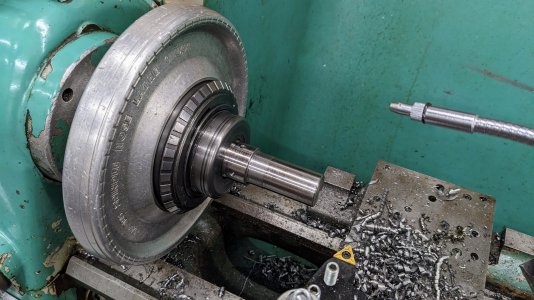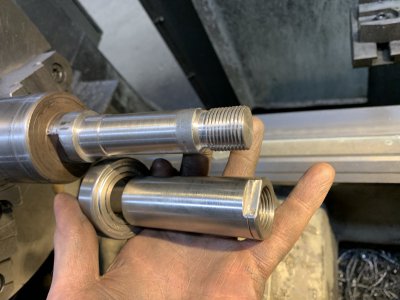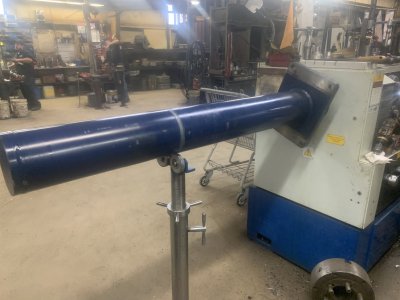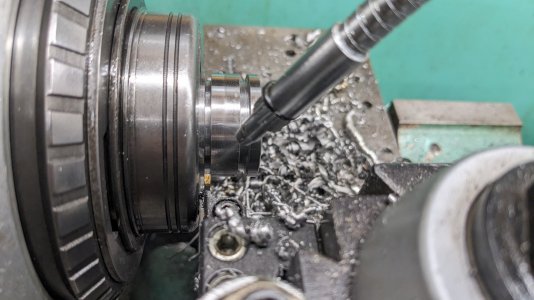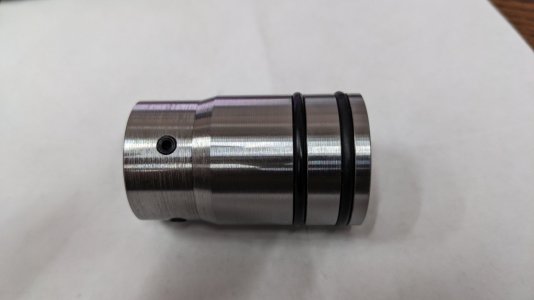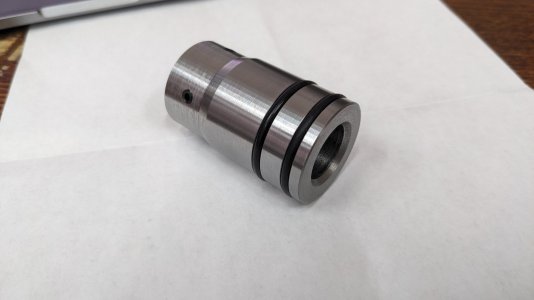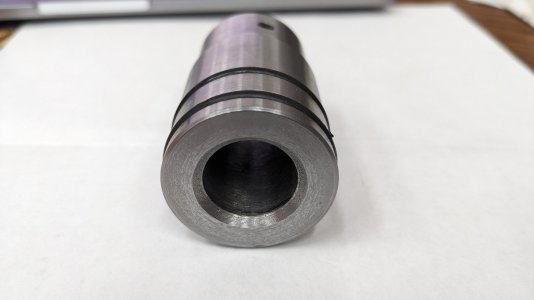- Joined
- Oct 30, 2019
- Messages
- 197
Quick little part I made after work yesterday. I have a project for the house (custom and cabinet pulls in the kitchen) where I intend to be making a bunch of parts off of of relatively long (3 feet or so), floppy (3/8" or so) stock through the spindle tube in the lathe. Pre-cutting the stock into pieces would result in more waste since the ends of the parts would all need to be faced to length, etc.
I shouldn't need a full floor-standing support solution for this length, a bushing in the back end of the spindle tube should work. If I ever have longer stock to work on, I would make something that supports the stock on the bandsaw nearby
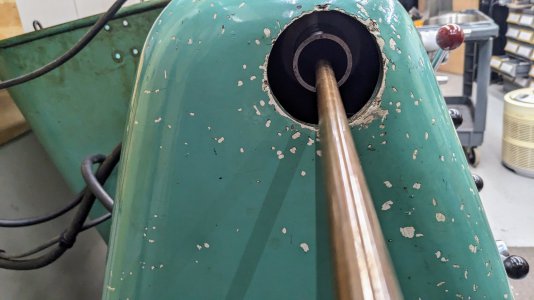
The idea is to:
Found an off-cut of some unknown scraptonium alloy steel in my bin. The larger diameter didn't fit in the spindle, and it had a reduced section at the end which was too small to sit in the tube. It wasn't exactly this piece but similar.
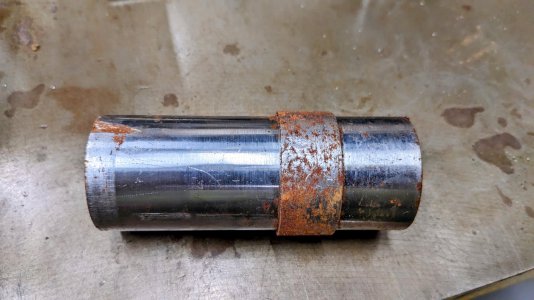
I figured I would turn the major OD down to be a slip fit in the spindle, clean up the minor diameter, and put the set screws on that reduced area to make use of the extra length available. Then there's extra length on the reduced diameter that I would part off, and clean up the face.
and so that's what I did ...
Held the stock by the narrow end in the collet chuck
Turned the OD down to the required diameter. Turned a short taper down where there was a step in the stock, then skimmed the reduced area to clean it up.
Drilled to 9/16 and then 3/4". Chamfered the ID and OD.
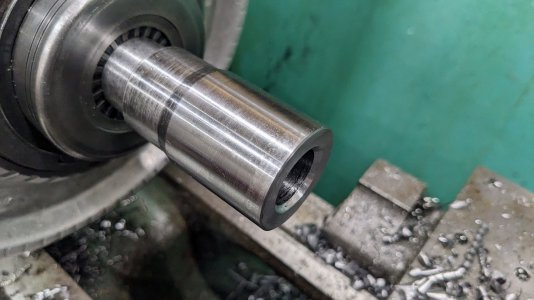
This was also a good little part to use my newly-repaired mist coolant (Bijur Spraymist) setup. The lathe came with it, but the unit was totally corroded with aluminum white death inside, from whatever coolant had been left in there long-term in the distant past. With this being a tougher alloy of steel, the mist coolant let me run through the turning and drilling operations drastically faster than I would normally need to do without cooling.
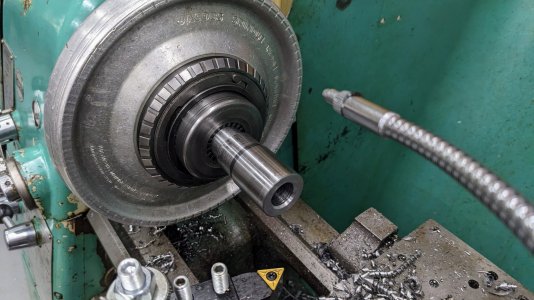
Moved the part to a collet block and drilled+tapped the set screw holes at the drill press. I just eyeballed the location of the first set screw, with the collet block aligned to the back edge of the vise jaw. that way I could turn the block 12 times for the 3 sets of operations:
- center/spot drill
- tap drill
- tap
and keep close enough to the same center for everything on the 4 tapped holes.
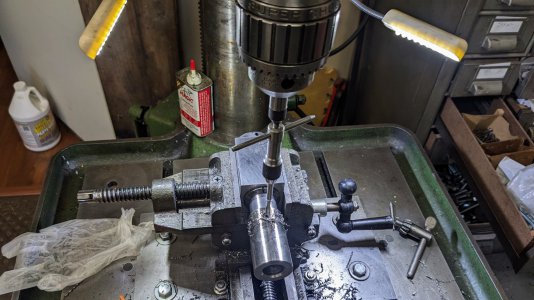
Then back to the collet chuck in the lathe, but this time holding the part backwards. This new chuck really shined here, it makes so many points of contact that the clamping force is distributed without marring the part at all. If I was putting this in the 4-jaw, I would have needed to use copper or aluminum sheet to protect the part
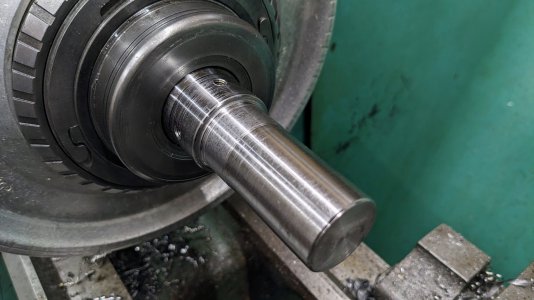
Parted off the excess length, again an operation where the mist coolant let me accomplish the task drastically faster (3x to 5x) than would have otherwise been possible. By holding the part backwards for the parting operation, I was able to then face and chamfer the end without changing the setup again
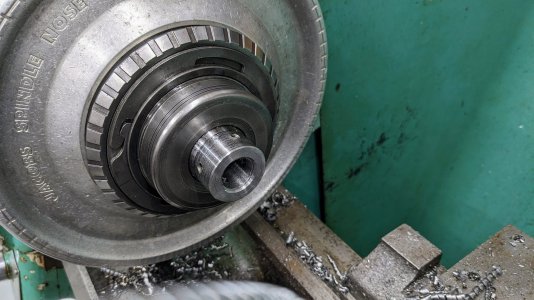
Done. The set screws were picked from stuff I had on hand - they are 10-32x5/8" (or x3/4"), with a plastic tip. The project I will be using this for first is probably going to be bronze rod or some other copper alloy, so I wanted to protect the surface in case I end up using the factory OD of the stock. Also the plastic tips let me snug it up, but also let the stock slide through the part if I don't want to constantly tighten/looseen the screws every time I am ready to advance the stock.
Not bad for eyeballing set screw locations, but if you look closely you can see that the opposing screws are offset - so my setup was probably about .015 or .020 off-center at the drill press. This is fine, it's basically a mini 4-jaw chuck for holding the stock so that can be adjusted out
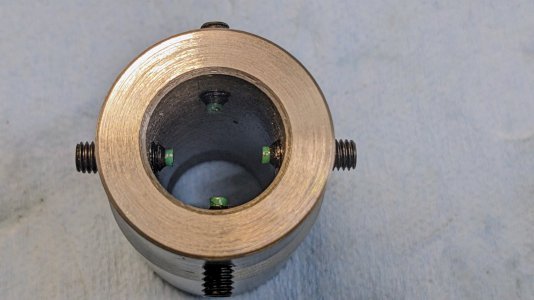
I added a little bit of purple (adjustable) locktite to the set screws as well.
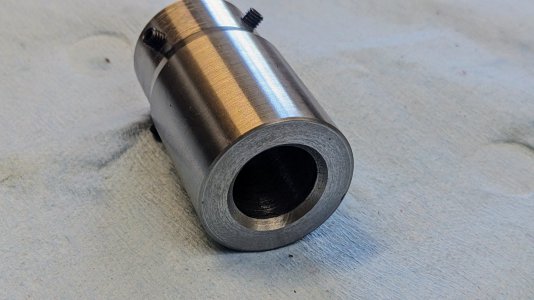
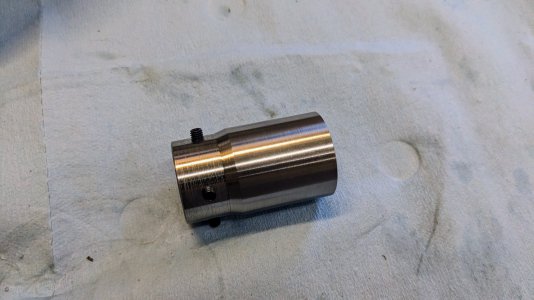
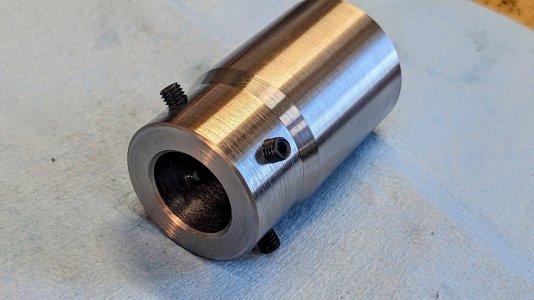
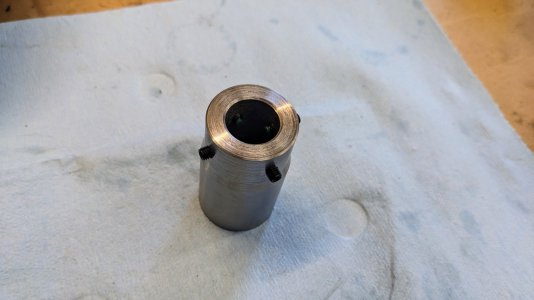
This seems to meet the need well enough. If I ever need to run longer stock, I would figure out a solution that clamps to the table of the bandsaw located further past the lathe, something that lets the stock be supported by bearings but also caged by a safety in case it does start wobbling and whipping.
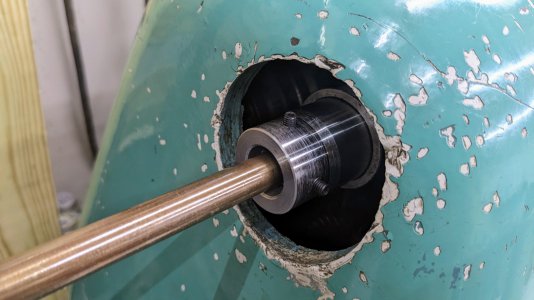
There is a hole already drilled in the top of the fiberglass cover which just about lets me run this further into the spindle tube and access the set screws. A slightly different design would have let me take more advantage of it.. However I specifically wanted to extend this out a little bit so that the added support is further down the stock.
The fit of the bushing in the spindle tub could stand to be a little tighter. The spindle tube's ID didn't seem to be 100% consistent at that back end, so I had to turn the bushing to a slip fit on the smallest of the measurements I got.
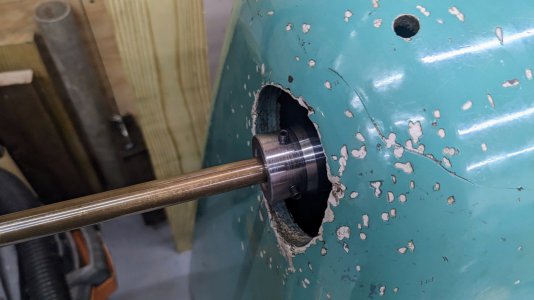
Thanks for reading. I think this whole thing was only 60-90 minutes from "huh my stock is wobbling" to "this is solved well-enough"
I shouldn't need a full floor-standing support solution for this length, a bushing in the back end of the spindle tube should work. If I ever have longer stock to work on, I would make something that supports the stock on the bandsaw nearby

The idea is to:
- find an off-cut a couple inches long that doesn't fit in the spindle tube
- turn it down to fit
- drill a hole down the middle that can pass through the stock sizes I expect to need it for
- use set screws to hold the bushing onto the stock. it shouldn't need any set screws to hold it to the spindle tube, since the stock is retained by the chuck and the bushing can then be retained by the stock
- ideally have the part be long enough to reach the set screws without taking the fiberglass cover off the back of the lathe
Found an off-cut of some unknown scraptonium alloy steel in my bin. The larger diameter didn't fit in the spindle, and it had a reduced section at the end which was too small to sit in the tube. It wasn't exactly this piece but similar.

I figured I would turn the major OD down to be a slip fit in the spindle, clean up the minor diameter, and put the set screws on that reduced area to make use of the extra length available. Then there's extra length on the reduced diameter that I would part off, and clean up the face.
and so that's what I did ...
Held the stock by the narrow end in the collet chuck
Turned the OD down to the required diameter. Turned a short taper down where there was a step in the stock, then skimmed the reduced area to clean it up.
Drilled to 9/16 and then 3/4". Chamfered the ID and OD.

This was also a good little part to use my newly-repaired mist coolant (Bijur Spraymist) setup. The lathe came with it, but the unit was totally corroded with aluminum white death inside, from whatever coolant had been left in there long-term in the distant past. With this being a tougher alloy of steel, the mist coolant let me run through the turning and drilling operations drastically faster than I would normally need to do without cooling.

Moved the part to a collet block and drilled+tapped the set screw holes at the drill press. I just eyeballed the location of the first set screw, with the collet block aligned to the back edge of the vise jaw. that way I could turn the block 12 times for the 3 sets of operations:
- center/spot drill
- tap drill
- tap
and keep close enough to the same center for everything on the 4 tapped holes.

Then back to the collet chuck in the lathe, but this time holding the part backwards. This new chuck really shined here, it makes so many points of contact that the clamping force is distributed without marring the part at all. If I was putting this in the 4-jaw, I would have needed to use copper or aluminum sheet to protect the part

Parted off the excess length, again an operation where the mist coolant let me accomplish the task drastically faster (3x to 5x) than would have otherwise been possible. By holding the part backwards for the parting operation, I was able to then face and chamfer the end without changing the setup again

Done. The set screws were picked from stuff I had on hand - they are 10-32x5/8" (or x3/4"), with a plastic tip. The project I will be using this for first is probably going to be bronze rod or some other copper alloy, so I wanted to protect the surface in case I end up using the factory OD of the stock. Also the plastic tips let me snug it up, but also let the stock slide through the part if I don't want to constantly tighten/looseen the screws every time I am ready to advance the stock.
Not bad for eyeballing set screw locations, but if you look closely you can see that the opposing screws are offset - so my setup was probably about .015 or .020 off-center at the drill press. This is fine, it's basically a mini 4-jaw chuck for holding the stock so that can be adjusted out

I added a little bit of purple (adjustable) locktite to the set screws as well.




This seems to meet the need well enough. If I ever need to run longer stock, I would figure out a solution that clamps to the table of the bandsaw located further past the lathe, something that lets the stock be supported by bearings but also caged by a safety in case it does start wobbling and whipping.

There is a hole already drilled in the top of the fiberglass cover which just about lets me run this further into the spindle tube and access the set screws. A slightly different design would have let me take more advantage of it.. However I specifically wanted to extend this out a little bit so that the added support is further down the stock.
The fit of the bushing in the spindle tub could stand to be a little tighter. The spindle tube's ID didn't seem to be 100% consistent at that back end, so I had to turn the bushing to a slip fit on the smallest of the measurements I got.

Thanks for reading. I think this whole thing was only 60-90 minutes from "huh my stock is wobbling" to "this is solved well-enough"
Attachments
Last edited:


